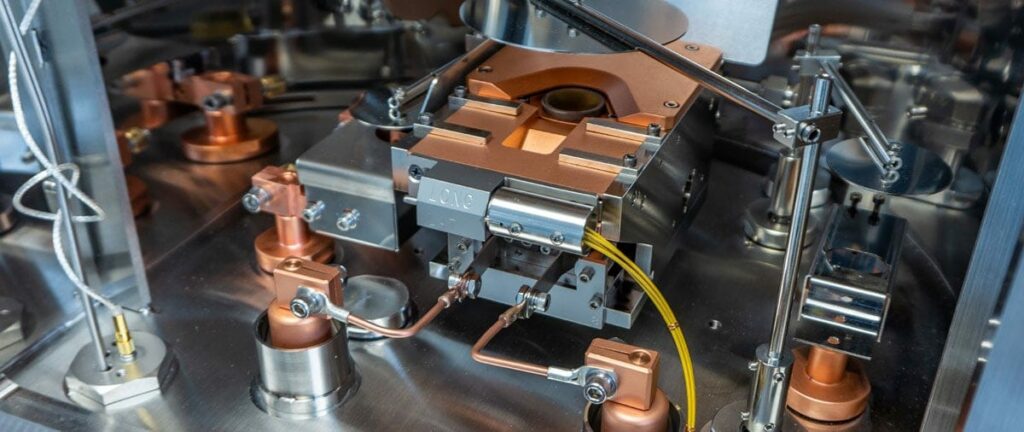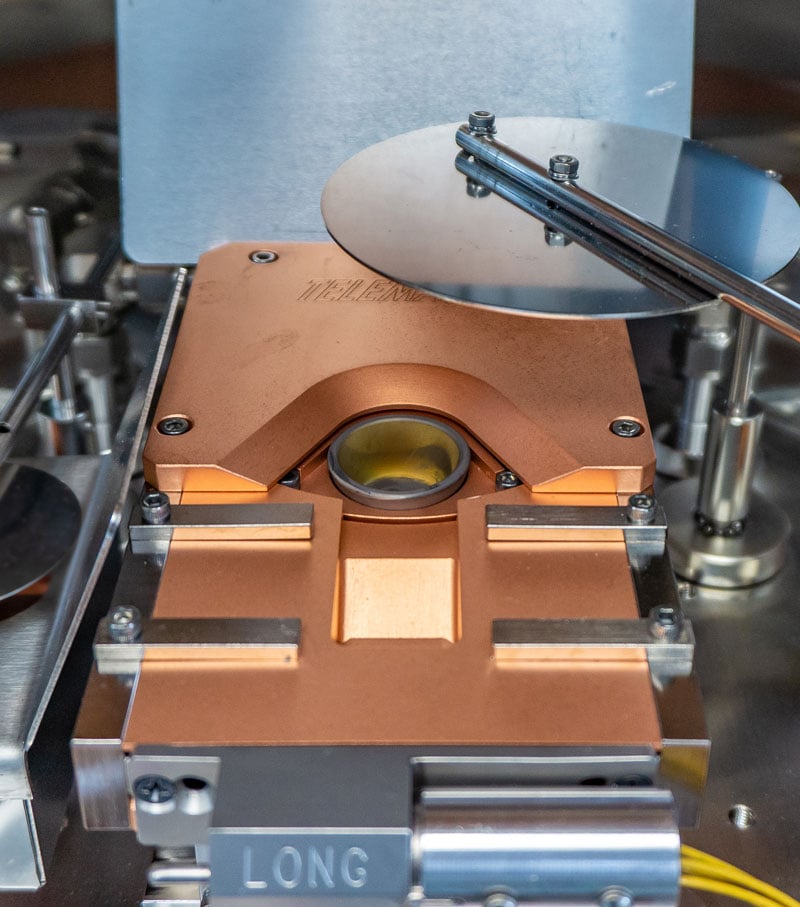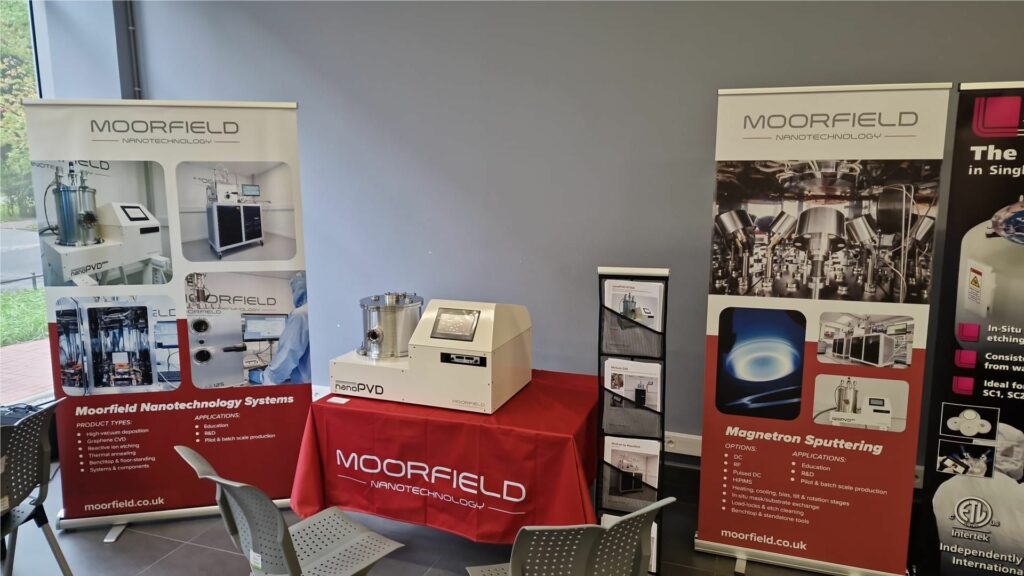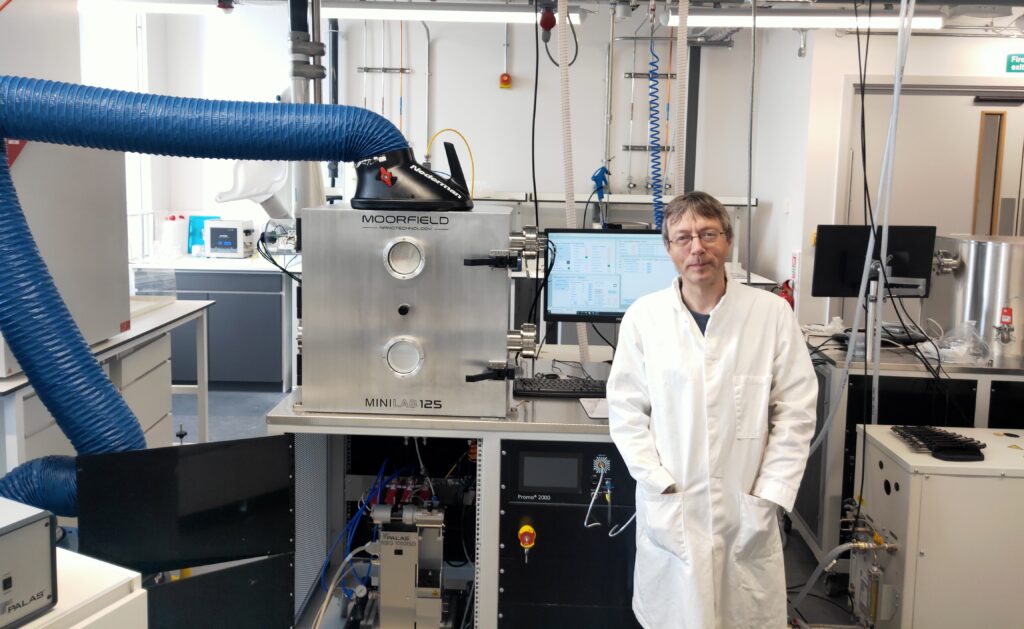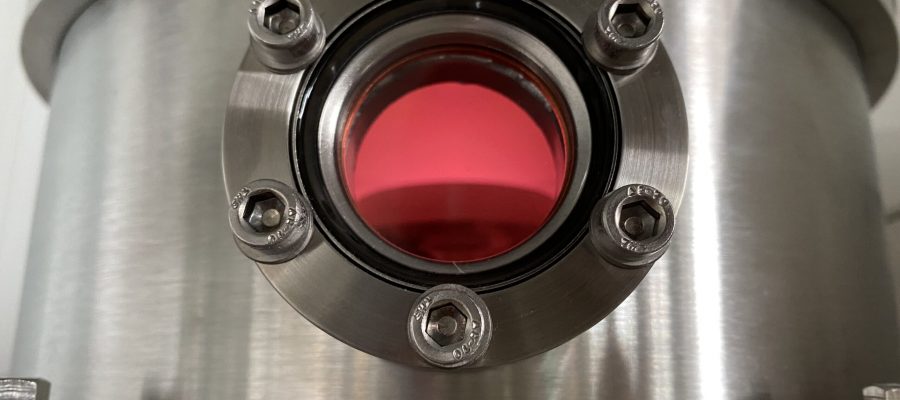How it works
During electron-beam evaporation, the vacuum allows for high vapour pressures at certain temperatures, and minimises the amount of contamination that can be incorporated into the deposited thin film on the substrate. The temperature must be high enough that the evaporant can release a vapour (through either evaporation or sublimation).
For electron-beam evaporation, the evaporant material is supported on a component (known as the source) which exposes it to beam of electrons, accelerated to high kinetic energy through a high-voltage (e.g., up to 10 kV) electric field.
The electrons are typically released via thermionic emission from a filament located elsewhere on the source. For most industry-standard sources capable of high deposition rates, the filament is located under the material pocket, with the electron beam being focussed through a circular profile into the pocket by a magnetic field. The electron beam transfers energy into the pocket, heating the material to high temperatures at which vapour can be released. The source is water-cooled to prevent co-deposition of the material constituting the source itself (usually copper).
Why use E-beam Evaporation?
Evaporant heating via an electron beam allows for much greater temperatures than standard (resistive heating) thermal evaporation. As such, the method can be used to deposit metals and other materials with very high evaporation temperatures, e.g., platinum and SiO2. The method also allows for a high degree of control of, for example, deposition rate that can affect film properties significantly.
Evaporation techniques are line-of-sight, with evaporant vapour moving in straight lines between the source and the substrate. As such, they provide highly anisotropic coating useful for, among others, lift-off applications.
Moorfield systems for Electron-beam evaporation
MiniLab systems
Flexible, modular PVD systems for high- quality R&D and pilot-scale production.
View systems
See also
https://en.wikipedia.org/wiki/Electron-beam_physical_vapor_deposition
